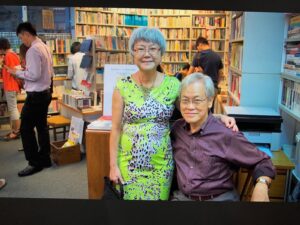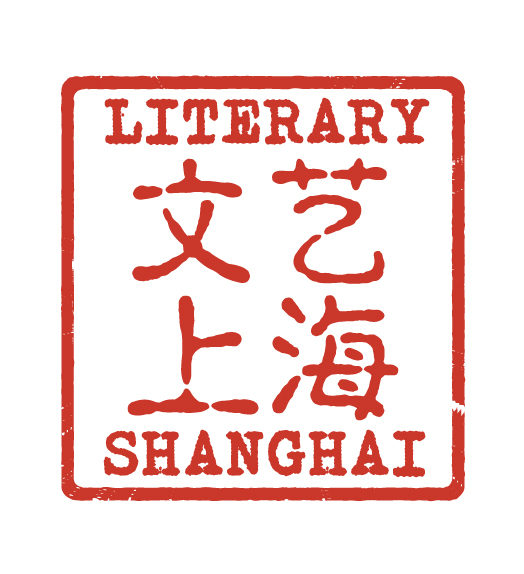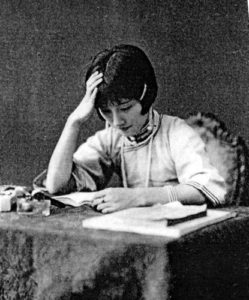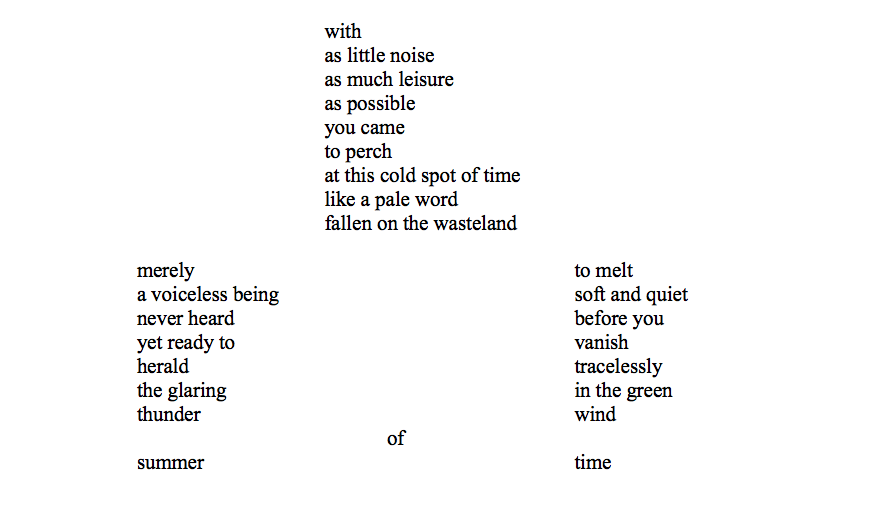“They Called You Dambudzo” is a memoir by Flora Veit-Wild, Emerita Professor of African Literatures and Cultures at Humboldt University, Berlin. She was born in West Germany in 1947. “Dambudzo” was Dambudzo Marechera, a novelist and poet, an enfant terrible of modern literature, born in Southern Rhodesia in 1952.
With their two young boys, Flora and her husband Victor arrived in Harare, the capital of newly independent Zimbabwe, at the end of 1982. Dambudzo was homeless but a legendary writer in Harare, where he remained since his unintended return from Europe. He had been a writer tramp for a few years in Europe after being kicked out of New College in Oxford, where he attended on scholarship.
Flora and Dambudzo met in Harare and immediately fell in love, or entangled.
He died in 1987 of pneumonia caused by AIDS. Flora took care of him till the end.
She did not write a formal biography of Dambudzo Marechera for she felt she was too close to him. Her interpretations of his poems given in this book are often tied to the circumstances of his writing. She must have offered and encountered different readings of the same poem over her years of teaching since that’s the beauty of poetry: no amount of background information limits the effect and interpretation of good poems. Background information as such does not fully explain the motives of one’s life decisions, either. This book is a personal biography: a biography of love between the writer lovers, told often in an intimate second person voice.
What FloraVeit-Wild did to preserve Dambudzo Marechera’s work was tremendous. Marechera, now called the best writer in Africa of his generation, didn’t leave much behind besides a few brilliant publications before his death. His return from Europe coincided with the nation building following the hard fought independence. Publishers stayed away from Dambudzo’s radical and disturbing, yet highly artistic and un-nationalistic, writing; he was often drunk and seemingly paranoid.
Throughout the review, I will call Flora by her first name because that’s how we met. The two of us were in the Iowa International Writers’ Workshop for Creative Nonfiction with Cutter Wood in 2014. The roster showed the participants’ residencies spreading over thirteen countries from Bangladesh to Argentina and South Africa. Most of us lived in two or more languages and chose to write in English. Germany was Flora, and Japan was me.
In the Iowa writers’ workshop, Flora was on a mission to write this memoir. Infected by her enthusiasm, I bought two books: Cemetery of Mind (a collection of poems by Dambudzo Marechera, compiled and edited by Flora) and Moving Spirit (a book that emerged from the tribute symposium for Marechera at Trinity College, Oxford, 2009.) Then, in the spring of 2022, the topic of African poets came up while conversing with a poet friend. I opened the Marechera books, which I hadn’t touched for a while. I was excited when I found, on the internet, that she completed the book.
Let us consider the title, “They Called you Dambudzo.” Dambudzo is his name in the Shona language that was spoken in the region where he was born. Flora informs us:
They called you Dambudzo (‘the one who brings trouble’) because they were destitute.
Here, “They” refers to the family; however, Dambudzo’s This is “they” from An Interview With Himself describes “they” of his early life:
They ranged from the few owners of grocery stores right through primary school teachers, priests, deranged leaders of fringe/esoteric religions, housewives, nannies, road-diggers, factory workers, shop assistants, caddies, builders, pickpockets, psychos, pimps, demoralized widows, professional con-men, whores, hungry but earnest schoolboys, hungry but soon to be pregnant schoolgirls and, of course, informers, the BSAP (British South African Police), the police reservists, the TMB ghetto police, the District Commissioner and his asserted pompous assistants and clerks, the haughty and rather banal Asian shopkeepers, the white schoolgirls in their exclusive schools, the white schoolboys who’d beat us too when we foraged among the dustbins of the white suburbs, the drowned bodies that occasionally turned up at Lesapi Dam, the madman who was thought harmless until a mutilated body was discovered in the grass east of the ghetto, the mothers of nine or more children and the dignified despair of the few missionaries who once or twice turned up to see under what conditions I was actually living.
The list grows longer as he lives on. By the time Flora finalized the title, I could not help but wonder who else she might have added from the fact-finding journey she took as his biographer after his death. She visited his family (your mother was so proud of you,) tracked down the twins you played ‘office’ in a cardboard house and an old type writer you found at the dump, met with the people who knew Dambudzo in London and Oxford (he obviously had a chip on his shoulder about being black,) and many literary figures Dambudzo knew in Africa and elsewhere. Many felt guilty and received her as if she was a tax collector. Quite a few suddenly declared themselves as Marechera’s best friends and believers of his talent. She would meet his other white woman, too. People suspected her motive as his executor, suggesting her misappropriation of his material.
The book begins with Prelude. The Prelude rushes – it is slightly confusing or incoherent for the reader who is not yet familiar with the story. The sudden switch to direct speech such as “You had not written a will,” or “On the day you died, I collected your papers,” might throw you off. But if you return to Prelude after reading the book, you will appreciate it differently. She speaks directly to Dambudzo in the first chapter (many chapters are only 2-4 pages long) and another toward the end. The second-person style grew on me: I hear the tender voice of the woman who loved him despite all the hardships during and after the life with him: The price, high or not, she paid to follow her desire. The composites of short chapters make the book choppy despite her consistent language. Readers should be assured, however, that this book answers all of the questions:What does it mean to live with HIV? To be infected and infect others and meet another who’s on the chain of infection? What was her husband doing? How did she become the executer of his affairs without a will? What was happening in the newly independent Zimbabwe? Flora had anticipated all sorts of questions.
I believe that the choppiness and confusion I feel while reading are because certain things are not made for language. There are things we don’t talk about, or we only whisper a few words and nod as if we understand them. They are, for example, adultery, cancer, AIDS, abortion, depression, and racism. We are not good at articulating these topics in any language. In addition, racism overshadows everything; the racial society directed Dambudzo’s talent. And it was the 80s. We were just beginning to find out about AIDS. We did not have the knowledge or awareness to talk about it. Nevertheless, Flora kept the meticulous record of Dambudzo’s diagnosis of AIDS followed by her and her husband’s HIV positive test results and life thereafter with HIV.
Dambudzo believed in the power of language. Flora asked him as many others did: Why did he not write in his native language? He answered: Shona, the language he grew up in, was filled with violence. So he chose English, yet he didn’t take the colonial language as it is; You have to turn it upside down until it screams your screams. What he meant is described by Édouard Glissant, a French Caribbean writer and philosopher, thus: He (Glissant) intentionally destabilized and de-categorized the standard French to establish the new relationships between the words and the objects to make the others know that he was different. Flora also wrote: You would not allow any white liberal art lover to feel comfortable patting the back of a black writer from the ghetto, however gifted he might be. You would always bite the hand that tried to feed you. Relations, what Glissant called it, are also the technique of poetry or poetic language where most of work is done by associations. Post-colonial writings take the associations to where the colonialist imaginations haven’t been. Dambudzo’s poetry and novels represent that style.
His reputation was made by his novels, but it was his poetry where he communicated his feelings toward Flora and his other white women. The Amelia Sonnet is a series of thirteen poems; Amelia is Flora; Amelia was Heinrich Heine’s woman who didn’t share his feeling. Amelia is the archetype of the unrequited love and the unattainable ideal woman. Yet, in Dambudzo’s poetry, we cannot expect Heine’s lyricism sung in the melodies of Schumann or Schubert. Flora writes:
The Amelia Sonnets, which he wrote in anticipation of my departure, talk about his fear
of abandonment. The ordinary objects around him, the dust, the crockery, the
cockroaches, turn into symbols of absence.
The last four lines of the poem, The visitor, are haunting:
And she, my human hunger, grew pale, lost appetite, became haggard
Shunned by her own kind. Outraged storms, as if fired from some
Celestial cannon up there, day after day blew down upon us. Amelia
Drowned. I shunned man and his daylight ways. I make the terrible pact
And nightly may visit her in spite of her horns and forked tail.
They are the Black Sunlight love sonnets, borrowing the title of Dambudzo’s other prose work. They express perhaps more than his anxiety about Flora going away for a month. His comment:
Another part of the ambiguity of the Amelia poems is that I know that Amelia will never be mine, wholly mine, my own. To love somebody is to want them all the time, to want to drown their identity in one’s own identity, that everything they do or say or decide or think is centered on what I am.
Flora knew she couldn’t give what he wanted. Flora also knew and understood what her white body meant to him. Dambudzo’s words:
Amelia is white; I am black. . .Amelia does not have any sense of race . . . In a very personal sense, it does not matter at all what race Amelia is, but there are times, especially when I have gone through some shitty incidents or I remember some of the things which were happening here before 1980, that’s when I feel very violent towards Amelia.
Flora keeps asking herself: Why Dambudzo? Do we have a choice in who we love? Perhaps, love is something not made for language, either. In the beginning, it must have been a thrill. Being infatuated with him is easy to imagine. Marechera’s accent. The voice. His talent. His mannerism. In an interview with Fiona Lloyd, a journalist, she admitted that it might not have happened if she had met him a little later once her initial excitement of moving to a new place and meeting new people had time to wear off a little.
And there was his theatricality. Nadine Gordimer recalled him answering Flora’s question about what he was like:
‘Marechera was seated beside me at the writers’ workshop,’ Gordimer remembered. ‘Of course, he always made an entrance like an actress, very late, with that big red scarf flying. . . ‘
Flora also writes about herself:
I had always had a longing for the wondrous, the fantastic, the outlandish. . . Dambudzo appealed to the clownish, melancholic, poetic part of me, which was menacingly dark and colorfully bright at the same time. . . He led me through many closed doors.
He was the perfect storm.
She couldn’t extricate herself from him, from the troublesome relationship for a long time. She writes how he banged on her and her husband’s bedroom window in the middle of the night demanding that the taxi driver needed to be paid. Then, there were times like the scene shown in the memoir: Dambudzo performed his long poetic sequence, “My Arms Vanished Mountains” written during her absence, with the background music of Ravel’s Bolero.
The story’s left arm was missing
It needed thick-lensed spectacles
They watched him fall from the tenth floor
Chewing gum stuck to his dentures
Such a sun
Such a crying morning song
Falling directly on the spikes
This is my body
That is my pencil.
The poem is the wide winding river, filled with longing and yearning. The forty-minute performance given by not completely drunk Dambudzo would charm her all over again.
Yet, she was not blind:
It was an exciting and a daunting journey into the life and work of the ‘black heretic.’ At times I felt overwhelmed by the effort of it, at others thrilled by the miracles I unearned. I felt so many things, Dambudzo: grateful, gratified, inadequate and, indeed, full of love.
Yet, I had a price to pay.
Before arriving in Zimbabwe, while she and Victor lived in Nurnberg, she had taken a course in miming. Later, she ran workshops for children. I was wondering why mime, but when I came to the end of the book, she talked about her Gestalt therapy puppets – they made a perfect symmetrical bookends of who she is. Her playful creativity flourishes also in these forms.
She writes about her depression:
A year after I had started my position and work as a professor I cracked.
I had my first bout of clinical depression.
The Lady in Black made her appearance.
Years of psychotherapy and medication followed. I learned to do my job.
I also learned to live with the visits from the Lady in Black. . . At some point I gave her a body I could talk to or scold or throw against the wall: a gestalt, made of fabric, cardboard, wire ribbons, and beads.
Flora began making her puppets. Like her fascination with miming, the puppets became companions. It started with Lady in Black. She quotes CG Jung:
‘Depression is like a lady in black. If she turns up, don’t shoo her away. Invite her in, offer her a seat, treat her like a guest and listen to what she wants to say.’
Other puppets followed. She writes:
that many people who saw her puppets proclaimed that they must have been inspired by her connection with Africa but she refutes by saying that she does not feel they are, apart from the general penchant in cultures worldwide —including Africa —.
Isn’t this what Dambudzo was saying? He said in an interview:
‘I would question anyone calling me an African writer. . ‘He is not a writer for a specific nation or a specific race.
Their minds were merging, but Flora kept her private and professional life separate for decades. The memoir was a surprise or confirmation. Her last chapter ‘Out of Closet’ is touching.
In all those years, there was the public face of your biographer and editor, of the teacher the critic, the Dambudzo Marechera’ authority’ as people started to call me, the face of the committed scholar who would safeguard your legacy, commended by many, envied and reviled by others. Behind that public face, only known by some, imagined by others, was the private one, the face of the woman who had loved you and had lain in your arms, had seen you die and had her own physical grievances to bear.
And yet, it took more than thirty years until my two Marechera faces blended into one.
The trigger to write the memoir came in 2009 at the Celebration of Marechera at Oxford. Someone asked her: “What was your real relationship with him?” She answered: “I suppose it is time that I write my own story.” And she did. With or without the trigger, I believe that it would take time to be able to write about some things in life if it is at all possible. We also need to be at a certain age to be able to put a pen to paper.
The Prelude ends with the last fragment from the Amelia Sonnet sequence.
Time’s fingers on the piano
play emotion into motion
the dancers in the looking glass
never recognize us as their originals.
Her recollections might have appeared unrecognizable at times with the passage of time. However, by paralleling her memory with ongoing life and by carrying on speaking to Dambudzo, Flora made the memoir vivid in images and intimately tangible.
(“They Called You Dambudzo” A Memoir by Flora Veit-Wild, James Currey, An imprint of Boydell & Brewer Ltd.)
Continue reading





